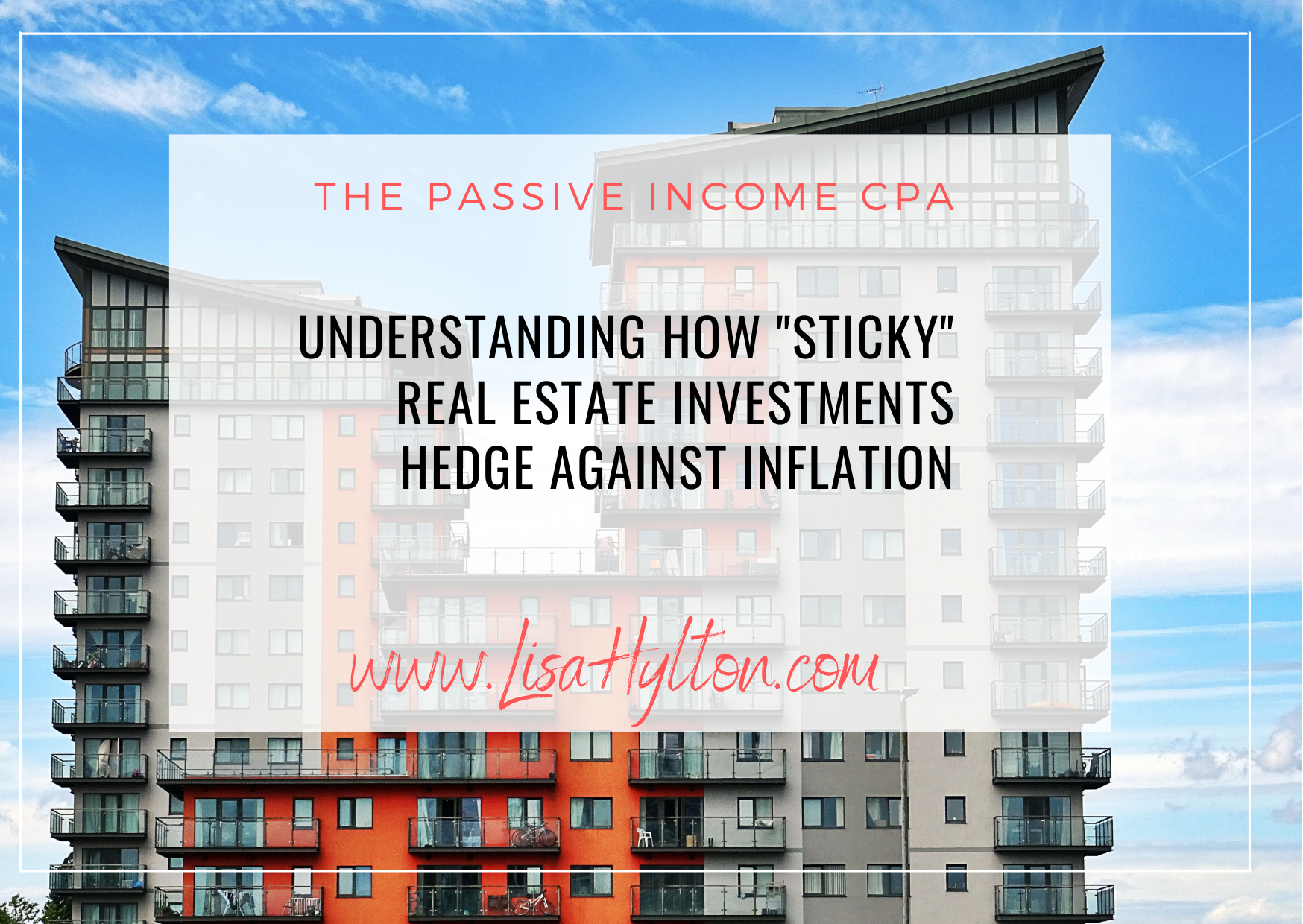Confused by all the Apartment Investing Terminology?
Then this is the perfect document for you. Bookmark this handy evergreen guide in your browser for easy reference.
| General Terms | ||||||||||||
|
Apartment Syndication: |
An investment structure in which several investors pool their capital together and invest in apartment buildings larger than they could individually. Frequently structured as LLCs there are usually two pools of investors: The General Partner Team pulls the deal together and manages the deal. The Limited Partner Team which consists of passive investors. |
|||||||||||
|
|
||||||||||||
|
Accredited Investor: |
A person that satisfies either of the following requirements: Annual income of $200,000 for singles or $300,000 for married for the last two years with the expectation of earning the same in the current year OR a net worth exceeding $1 million either solo or with a spouse. | |||||||||||
|
|
||||||||||||
|
Sophisticated Investor: |
A person who is deemed to have sufficient investing experience and knowledge to weigh the risks and merits of an investment opportunity. | |||||||||||
|
|
||||||||||||
|
Economic Occupancy: |
The number of apartment units paying rent divided by the total number of units. | |||||||||||
|
|
||||||||||||
|
Economic Occupancy Rate: |
Effective gross income divided by Gross Potential Income. | |||||||||||
|
|
||||||||||||
|
Physical Occupancy: |
The number of units occupied divided by the total number of units. When physical occupancy is greater than economic occupancy then you know there are units that are occupied and no rent is being paid. | |||||||||||
|
|
||||||||||||
|
Cost Segregation Study: |
A study performed at the purchase of a property typically to allocate the purchase price to the different parts of the property in order to accelerate the depreciation of specific portions of the property. | |||||||||||
|
|
||||||||||||
|
K-1: |
This is the tax form that the sponsor team will provide to investors to enable them to file their tax returns. | |||||||||||
|
|
||||||||||||
|
Due Diligence: |
This is a period of time when the general partner team will walk the asset — all the units, physically assess property needs to finalize the initial business plan, conduct a lease audit (ie. Ensuring rent per lease matches the rental payments made by the tenant per the property’s accounting ledger and bank account. After the due diligence, the general partner team will firm up their offer to the seller. | |||||||||||
|
|
||||||||||||
|
Equity Investment: |
The costs of purchasing a property. For the Passive Investor, this is the amount of cash invested in the syndication investment. For the Active investor, this includes down payment for the loan, closing costs, financing fees, or operating account reserves. | |||||||||||
|
|
||||||||||||
|
Passive Investor or Limited Partner: |
An investor that invests cash into apartment syndications that are managed from the general partner or sponsor team. | |||||||||||
|
|
||||||||||||
|
General Partner or Sponsor Team: |
Active investors take care or manage the day to day operations of the apartment syndication investment business. | |||||||||||
|
|
||||||||||||
|
Concession: |
Discounted rents offered at move in such as one month fee or two months free. | |||||||||||
|
|
||||||||||||
|
Bad Debt Expense: |
The amount of uncollected money owed by a tenant after move-out. | |||||||||||
|
|
||||||||||||
|
Earnest Money: |
Cash paid by the buyer that is a portion of the purchase price to confirm to the seller their intention and ability to carry out the sales contract. | |||||||||||
|
|
||||||||||||
|
Operating Agreement: |
This document reflects the responsibilities and ownership percentages for the general and limited partners in apartment syndication. | |||||||||||
|
|
||||||||||||
|
Private Placement Memorandum (“PPM”): |
This document reflects the terms of the investment and the primary risk factors involved with making the investment. | |||||||||||
|
|
||||||||||||
|
Value-Add Property: |
Apartment communities that have economic occupancy of at least 85% and is stabilized and have the potential to be improved by improving operations or physical property. | |||||||||||
|
|
||||||||||||
|
Ratio Utility Billing System (RUBS): |
A method of calculating a tenant’s utility usage based on occupancy, unit square footage, or a combination of both. This is calculated monthly and billed back to the tenant. | |||||||||||
|
|
||||||||||||
| Financial Terms | ||||||||||||
|
Effective Gross Income (EGI): |
Gross potential income less vacancy, loss to lease, concessions, employee units, model units, and bad debt. | |||||||||||
|
|
||||||||||||
|
Gross Potential Income (GPI): |
The expected amount of income is the apartment complex is rented out 100% at the market rental rates. The gross potential income includes the rent at market rates and all other income. | |||||||||||
|
|
||||||||||||
|
Gross Potential Rent (GPR): |
The expected amount of rent if the apartments are rented at market rental rates. | |||||||||||
|
|
||||||||||||
|
Net Operating Income (NOI): |
Operating Income less operating expenses. These are the income and expenses from the operations of the property. | |||||||||||
|
|
||||||||||||
|
Loss to Lease: |
This reflects the revenue lost based on the market rent and the actual rent. | |||||||||||
|
|
||||||||||||
|
Market Rent: |
This is the rent that landlords in your market would reasonably expect to receive and a tenant is willing to pay. | |||||||||||
|
|
||||||||||||
|
Preferred Return: |
This is the return paid to limited partners before any income is allocated to the general partner. | |||||||||||
|
|
||||||||||||
|
Return On Capital: |
These are the operating distributions sent to investors monthly or quarterly. This is also proceeds received over and beyond the return of the capital. | |||||||||||
|
|
||||||||||||
|
Return of Capital: |
This usually occurs at the time of sale or when the property is refinanced. The sponsor returns to the investor their original capital invested. | |||||||||||
|
|
||||||||||||
|
Internal Rate of Return (IRR): |
The rate needed to convert the sum of all future cash flow to equal your initial investment. This rate considers the amount of time it takes the investor’s cash to be returned to them. A higher IRR reflects a faster return of the investor’s cash back to them. | |||||||||||
|
|
||||||||||||
|
Equity Multiple: |
The rate of return based on the total net profit and equity investment. | |||||||||||
|
Cash on Cash Return: |
The rate of return based on the cash flow and equity investment. It is calculated by dividing the cash flow by the initial equity investment. | |||||||||||
|
|
||||||||||||
|
Debt Service: |
The monthly mortgage payment made to the lender that can consist of the principal and interest. | |||||||||||
|
|
||||||||||||
|
Bridge Loans: |
Short term loans with high-interest rates and interest-only payments. These mortgage loans are used until a borrower secures permanent financing in 6 months to 2 years. These loans are ideal for repositioning an apartment community that does not qualify for permanent agency financing. | |||||||||||
|
|
||||||||||||
|
Permanent Agency Loans: |
These are long-term mortgage loans secured from Fannie Mae or Freddie Mac. The loan terms are usually between 3 to 5 years or more. | |||||||||||
|
|
||||||||||||
|
Capitalization Rate (Cap Rate): |
The cap rate is calculated by dividing the net operating income by the current market value of the property. It reflects the income that the property is expected to generate. | |||||||||||
|
|
||||||||||||
|
Debt Service Coverage Ratio (DSCR): |
This ratio measures the amount of cash flow available to pay the debt obligation. It is calculated by dividing net operating income by the total Debt service. A DSCR of 1.25 or higher is most ideal. | |||||||||||
|
|
||||||||||||
|
Yield Maintenance: |
A penalty paid by the borrower on a loan if the principal is paid off early. | |||||||||||
|
|
||||||||||||
|
Refinance: |
The replacement of an existing debt obligation with another’s debt obligation with different terms. | |||||||||||
|
|
||||||||||||
|
Recourse: |
The right of the lender to go after personal assets beyond the collateral if the borrower defaults on the loan. | |||||||||||
|
|
||||||||||||
|
Capital Expenditure (CapEx): |
Funds earmarked to be used to acquire, upgrade, and maintain the property. CapEx expenses are different from operating expenses because CapEx expenses improve the useful life of a property and are capitalized – spreading the cost of the expenditure over the useful life of the asset. | |||||||||||
|
|
||||||||||||
| Fees: | ||||||||||||
|
Acquisition Fees: |
The upfront fee paid by the new apartment syndication partnership to the general partnership team for finding, evaluating, financing, and closing the deal. Fees are typically between 1% to 5% of the purchase price depending on deal size. | |||||||||||
|
|
||||||||||||
|
Asset Management Fee: |
The ongoing monthly fee that is deducted from the cash flow each month and for the ongoing work of managing the asset and is typically between 1% – 3%. | |||||||||||
|
|
||||||||||||
|
Property management Fee: |
The ongoing monthly fee paid to the property management company for managing the day to day operations of the property. | |||||||||||
|
|
||||||||||||
|
Financing Fees: |
One time, upfront fees the lender may charge for providing the loan. The fees are typically 1.75% of the purchase price. | |||||||||||
|
|
||||||||||||
|
Guaranty Fee: |
A fee paid to a loan guarantor at closing for signing for and guaranteeing the loan. The typical fee is usually between 0.5% to 5% of the principal balance of the loan paid at closing or 5% to 30% of the general partnership. | |||||||||||
|
|
||||||||||||
|
Prepayment Penalty: |
A clause in a mortgage contract stating that a penalty will be assessed if the mortgage is paid down or paid off within a certain period. | |||||||||||
|
|
||||||||||||
|
Refinancing Fees: |
A fee paid to the general partner for the work to refinance the investment. | |||||||||||
Want to Invest with Lisa?
If you are interested in learning more about passively investing in apartment buildings, click here https://lisahylton.com/partner-with-lisa/ to sign up to learn more about upcoming opportunities.
About the Author

Lisa is the founder of Axcel Capital, a real estate company that invests with investors solely multifamily investments across the United States. At Axcel Capital, Lisa and her team focus on buying apartments with investors and shares the profits. This strategy enables her investors to build wealth and passive income through investing in conservative, high-quality multifamily assets.
Lisa is the host of the Level Up REI podcast where she interviews real estate investors on their stories and lessons learned. After a decade of working in the financial services industry, Lisa found investing passively in real estate syndications and was intrigued by the business opportunity to invest in real estate while also providing the opportunity to others to do the same along with her.
You can learn more about passively investing in high-quality multifamily assets that provide cash flow and strong returns at www.LisaHylton.com.




